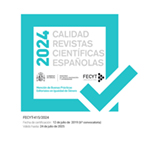Open Peer Review Vol.21 N.1
Angry Women in Horror: Beyond Challenging Traditional Notions of Femininity
Eva Alvarez Vazquez
Section: Videoessays
Reviewer A:
Please, comment on the most relevant aspects (positive points and areas to improve) of the reviewed videoessay.
This is a strong piece of videographic criticism that explores the role of female rage in relation to the horror genre, using Midsommar (2019) as its primary example, but connecting the film to other works that transcend decades and various kinds of female rage. The video essay emerges as particularly effective for the ways in which it situates itself within existing scholarship but presents such work in a way that transcends various tones: the scholarly, the personal, the political, and the non-scholarly critical. As many great works of videographic criticism do, one can imagine the various audiences with whom this work will resonate. The dynamic and compelling relationship between text, sound, and image emerges as this video's strong suit. One striking moment comes when the author cuts from a scene from Midsommar to footage of women protesting nuclear weapons. It is a gesture that showcases the video essay's poetic, political, and scholarly potential. The moment also comes as a bit of a surprise, taking us from the “horror” genre to a real moment in which women protest the horrific potential of nuclear weapons. In doing so, the author points to a compelling thorough line of female rage. Among the great advantages of video essays is their ability to generate new ways of thinking through sound and image, something this video does throughout, but particularly well now.
Would you suggest any changes or make any recommendations to improve the quality of the videoessay?
No open comments
Reviewer B:
Please, comment on the most relevant aspects (positive points and areas to improve) of the reviewed videoessay.
No open comments
Would you suggest any changes or make any recommendations to improve the quality of the videoessay?
No open suggestions
The videoessay included some modifications before the publication












